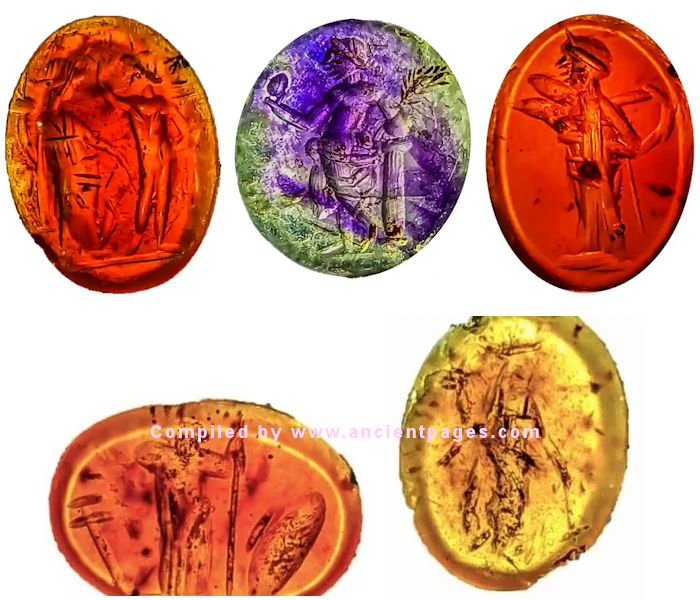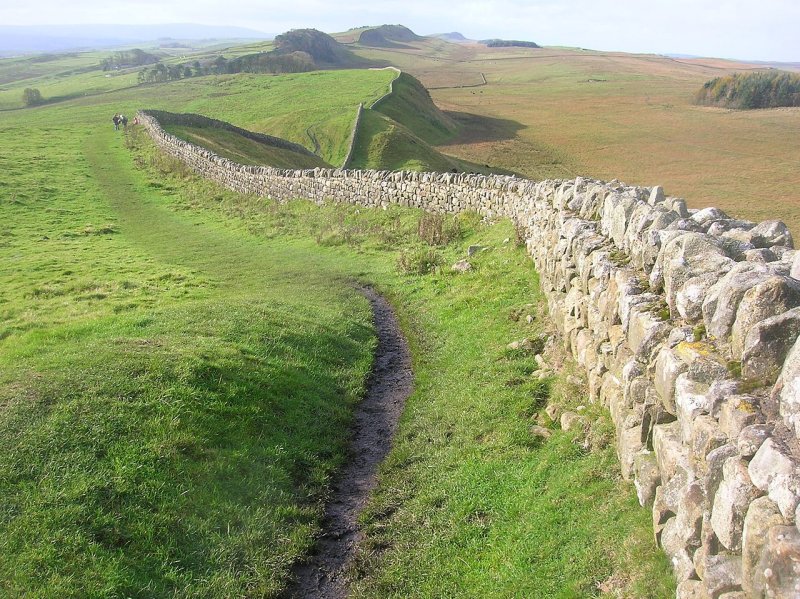Conny Waters – AncientPages.com – Archaeologists have discovered 30 amazing ancient Roman gems while excavating at a site in modern-day Carlisle, just behind Hadrian’s Wall, located near the border between modern-day Scotland and England.
The precious beautiful stones and beautifully engraved stones, known as intaglios, were lost by their Roman owners about 2,000 years ago. The gems were recovered from the drain of one of their bathhouses, meaning “stones had dropped out of their ring settings, their glue probably weakened in the steamy baths. They were simply flushed into the drains when the pools and saunas were cleaned” the Guardian reports.

Image credit: Anna Giecco – Compilation by AncientPages.com
The ancient Roman gems are no more than a few millimeters in diameter. Still, it is possible to admire the beautiful engravings “whose extraordinary craftsmanship suggests they would have been expensive items in their day – the late 2nd century or 3rd century.
One bather lost an amethyst depicting Venus, holding either a flower or a mirror. Another lost a red-brown jasper featuring a satyr seated on rocks next to a sacred column.”
“It’s incredible,” he said. “It’s caught everyone’s imagination. They were just falling out of people’s rings who were using the baths. They were set with a vegetable glue and, in the H๏τ and sweaty bathhouse, they fell out of the ring settings,” Frank Giecco, an expert on Roman Britain who is leading the bathhouse excavation told the Guardian.
Giecco added that the Romans’ loss of the intaglios must have been frustrating.
“They may not even have noticed until they got home because it’s the actual stone falling out of the rings – although we’ve also found one ring with a setting,” he said.

A view of Hadrian’s Wall showing its length and height. The upright stones on top of it are modern, to deter people from walking on it. Image credit: quisnovus – CC BY 2.0
“Metal expands. If the stone is not properly secured, it can fall out, as it can today with people bathing. I imagine that the gems recovered from the drain were accumulated over time, and we must remember that a lot of people used those baths,” Professor Martin Henig, an expert on Roman art at the University of Oxford commented when learning about this fascinating archaeological discovery.
As reported by the Guardian, “beyond their decorative purposes, as rings worn by men and women, there was a symbolism within their imagery. The newly discovered intaglios include military themes, such as the god Mars holding a spear and fertility, notably a charming image of a mouse nibbling a branch – Romans saw mice as symbols of rebirth or fertility.”
“You don’t find such gems on low-status Roman sites. So they’re not something that would have been worn by the poor. Some of the intaglios are minuscule, around 5mm ; 16mm is the largest intaglio. The craftsmanship to engrave such tiny things is incredible,” Giecco said.
It is fair to say the owners of these intaglios were not poor.
See also: More Archaeology News
The drain discoveries also include more than 40 women’s hairpins and 35 glᴀss beads, probably from a necklace.
The bathhouse was adjacent to the most important Roman fort on Hadrian’s Wall, the empire’s northern frontier, which held an elite cavalry unit and had links to the imperial court. Excavations will continue next year, but the evidence recovered, including imperial-stamped tiles, suggests that the bathhouse complex was monumental and opulent.
Written by Conny Waters – AncientPages.com Staff Writer





